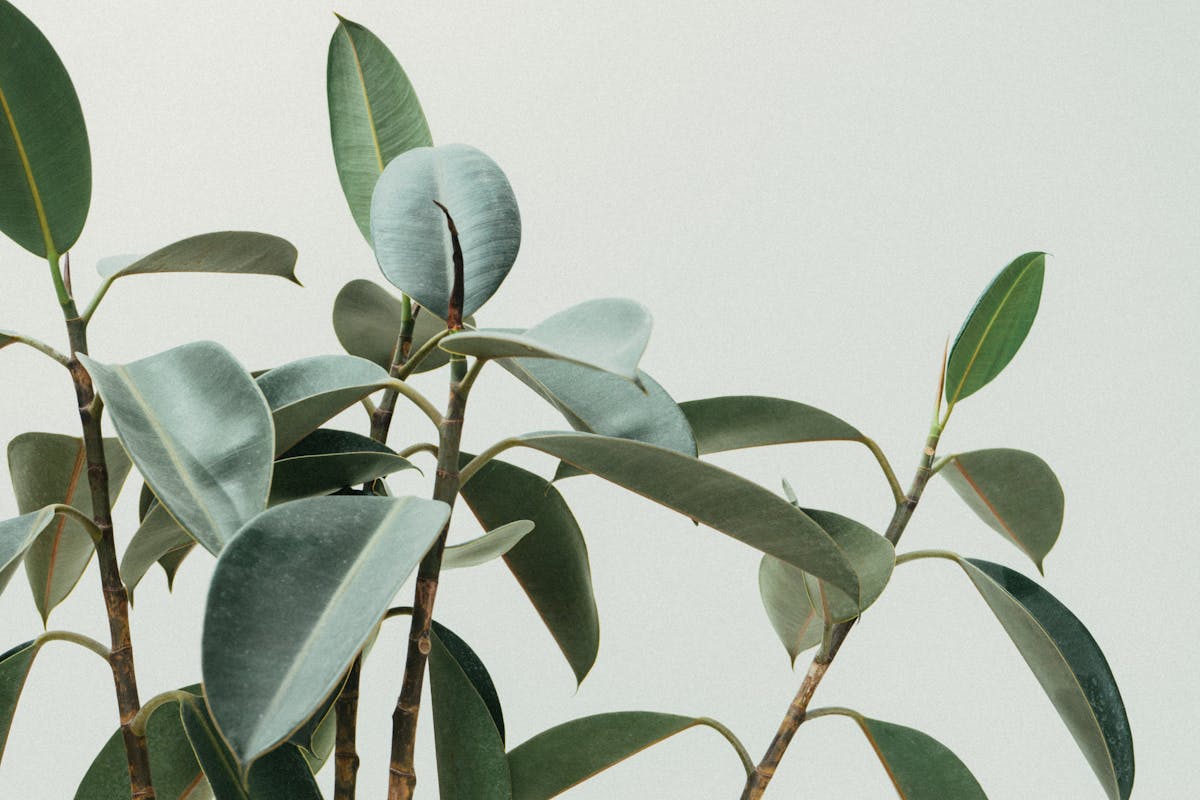If you’re looking to expand your collection or share the joy of plant ownership with friends, propagating rubber tree plants is a rewarding endeavor. This guide will walk you through the steps to successfully propagate a rubber tree plant, ensuring you have thriving new plants in no time.
Understanding Rubber Tree Plant Propagation
Before starting the propagation process, it’s essential to understand that rubber tree plants can be propagated through two primary methods: stem cuttings and air layering. Each technique has its benefits and can yield healthy new plants.
Method 1: Propagating Through Stem Cuttings
Stem cuttings are one of the most straightforward ways to propagate a rubber tree. Here’s a step-by-step guide:
What You’ll Need:
A healthy rubber tree plant
Clean, sharp pruning shears or a knife
A small pot with drainage holes
Well-draining potting mix
Optional: rooting hormone
Plastic bag or a clear plastic dome (to maintain humidity)
Steps:
Choose a Healthy Stem: Look for a robust stem on the parent plant. Ideally, you want a cutting that is at least 4-6 inches long and has a few leaves. Make sure the parent plant is healthy and free from pests and diseases.
Make the Cut: Using your sharp shears or knife, make a clean cut below a leaf node. This is where roots are likely to emerge.
Prepare the Cutting: Remove any leaves from the lower half of the cutting to prevent rot when planted. You can dip the cut end in rooting hormone to enhance root growth, although this step is optional.
Plant the Cutting: Fill your pot with the well-draining potting mix. Make a small hole in the soil using your finger or a pencil, then carefully insert the cutting about an inch deep. Firm the soil around the cutting to provide support.
Create Humidity: To maintain humidity, cover the cutting with a plastic bag or a clear plastic dome. This will create a mini greenhouse effect, promoting root development. Be sure to occasionally check for moisture and air out the cutting to prevent mold.
Water and Place: Water the soil lightly to settle it around the cutting. Place the pot in a warm location with bright, indirect sunlight. Avoid direct sunlight, as this can scorch the cutting.
Monitor Growth: After a few weeks, you should start to notice new growth, indicating that roots have formed. You can gently tug on the cutting; if there’s resistance, roots are likely developing.
Transplant When Ready: Once your cutting has established a good root system, you can repot it into a larger pot or directly into your garden.
Method 2: Propagating Through Air Layering
Air layering is another effective way to propagate rubber trees, especially if you want to encourage a specific branch to root while still attached to the parent plant.
What You’ll Need:
A healthy rubber tree plant
Clean, sharp pruning shears or knife
Moss or a sphagnum moss
Plastic wrap or aluminum foil
A twist tie or string
Steps:
Select a Branch: Choose a healthy branch that is at least one year old and preferably thick enough to support the rooting process.
Make an Incision: About 12-18 inches from the tip of the branch, make a 1-inch horizontal cut around the stem, going about halfway through. Just below this cut, make an additional vertical cut to create a flap of bark that can be pulled back.
Apply Moss: Gently pull the flap of bark back and pack moist sphagnum moss around the exposed area. This moisture will help roots to form.
Wrap and Secure: Use plastic wrap or aluminum foil to cover the moss, securing it in place with a twist tie or string. This will keep the moss damp and create a humid environment for root growth.
Watch for Roots: It typically takes several weeks to a few months for roots to form. Keep an eye on the moss to ensure it doesn’t dry out. If roots are visible through the wrap, it’s time to cut the branch.
Sever and Plant: Once a healthy root system has developed, cut the branch below the moss and pot it in a well-draining potting mix as mentioned earlier.
Caring for Your New Rubber Tree Plant

Once your rubber tree plants are successfully propagated, they need proper care to thrive. Here are some essential care tips:
Light: Rubber tree plants prefer bright, indirect light. Direct sunlight can scorch their leaves, while too little light can hinder their growth.
Watering: Water your rubber tree plant when the top inch of soil feels dry. It’s essential to not overwater, as rubber trees are susceptible to root rot. Ensure your pot has good drainage to prevent excess water from accumulating.
Humidity: Rubber tree plants enjoy a humid environment. If your home is particularly dry, consider misting the leaves occasionally or placing a humidifier nearby.
Temperature: Keep your rubber tree in a warm environment, preferably between 65°F to 80°F (18°C to 27°C). They can tolerate slightly cooler temperatures but should be kept away from drafts and cold areas.
Fertilizing: During the growing season (spring and summer), you can feed your rubber tree with a balanced liquid fertilizer every 4 to 6 weeks. In fall and winter, reduce or eliminate feeding, as the plant’s growth slows down.
Pruning: To maintain your rubber tree’s shape and encourage bushier growth, you may want to prune it regularly. Remove any yellowing leaves or competing stems to promote healthy growth.
Troubleshooting Common Issues

While propagating rubber tree plants is generally straightforward, you may encounter some challenges along the way. Here are common issues and their solutions:
Cutting Doesn’t Root: If your stem cutting doesn’t develop roots, ensure it received enough humidity and warmth. Additionally, check that the cutting was healthy and used clean tools to prevent disease.
Yellowing Leaves: If the leaves of your new rubber tree plant turn yellow, it could be a sign of overwatering or poor drainage. Check the soil moisture and adjust your watering habits accordingly.
Pest Problems: Rubber trees can be susceptible to pests like spider mites and aphids. Regularly inspect your plants and treat them with insecticidal soap or neem oil if you notice any infestations.
Conclusion
Propagating rubber tree plants can be an enjoyable and fulfilling activity for plant enthusiasts of all levels. Whether you opt for stem cuttings or air layering, both methods provide an opportunity to expand your green space and share these beautiful plants with others. By following this guide and giving your new plants the proper care, you’ll be rewarded with thriving rubber trees that not only enhance your home décor but also serve as a testament to your gardening skills. Happy planting!





